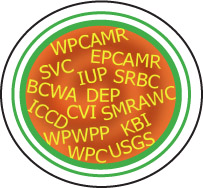|
|
6th Annual Pennsylvania Statewide
Conference on |
|
|
The Conference
Technical Session Registration NOW AVAILABLE!!
Return to
|
Abstract Optimization of Limestone Drains for Long-Term Treatment of Drainage, Swatara Creek Basin, Schuylkill County, PA Charles Cravotta, U.S. Geological Survey Limestone drains were constructed in 1995, 1997, and 2000 to treat contaminated mine drainage (CMD) from the Orchard, Buck Mtn., and Hegins discharges, respectively, in the Swatara Creek Basin, Southern Anthracite Coalfield, east-central Pennsylvania. This report summarizes the construction characteristics and performance of each of the limestone drains on the basis of influent and effluent quality and laboratory tests of variables affecting limestone dissolution rates. Data for influent and effluent indicate substantial alkalinity production by the Orchard and Buck Mtn. limestone drains and only marginal benefits from the Hegins drain. Nevertheless, the annual alkalinity loading rates have progressively declined with age of all three systems. Collapsible-container (cubitainer) testing was conducted to evaluate current scenarios and possible options for reconstruction and maintenance of the limestone drains to optimize their long-term performance. The cubitainer tests indicated dissolution rates for the current configurations that were in agreement with field flux data for alkalinity and dissolved calcium. The dissolution rates in cubitainers were larger for closed conditions than open conditions, but the rates were comparable for coated and uncoated limestone for a given condition. Models developed on the basis of the cubitainer testing indicate (1) exponential declines in limestone mass and corresponding alkalinity loading rates with increased age of limestone drains and (2) potential for improved performance with enlargement, complete burial, and/or regular flushing of the systems.
|
|
